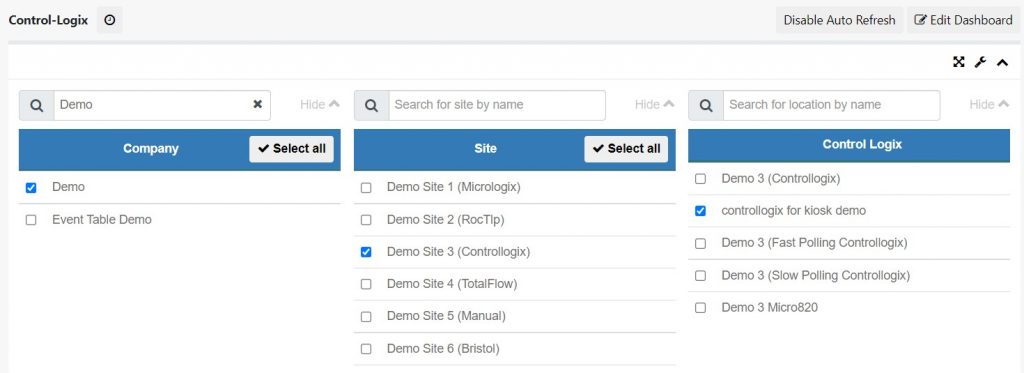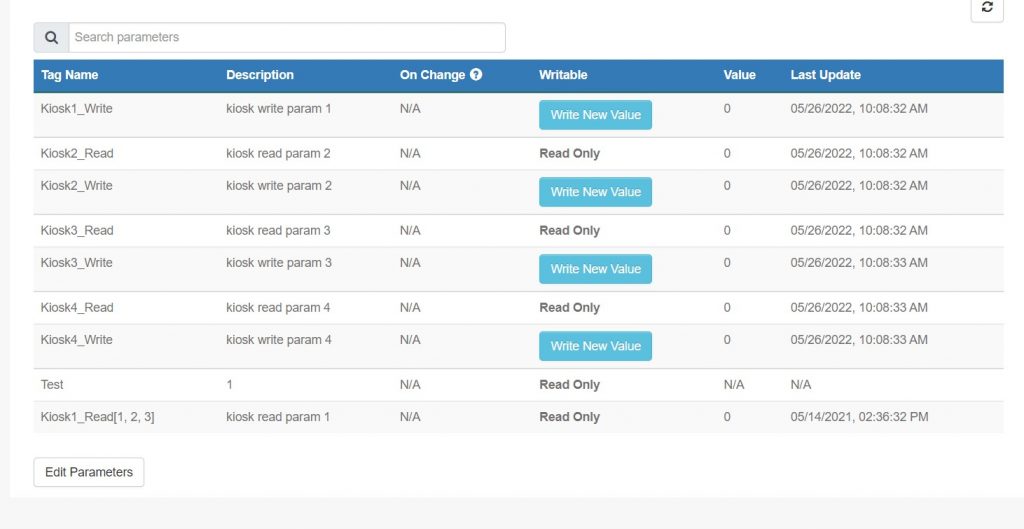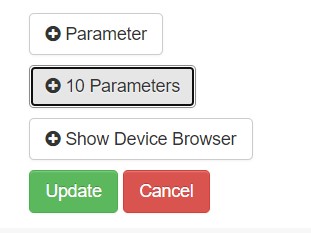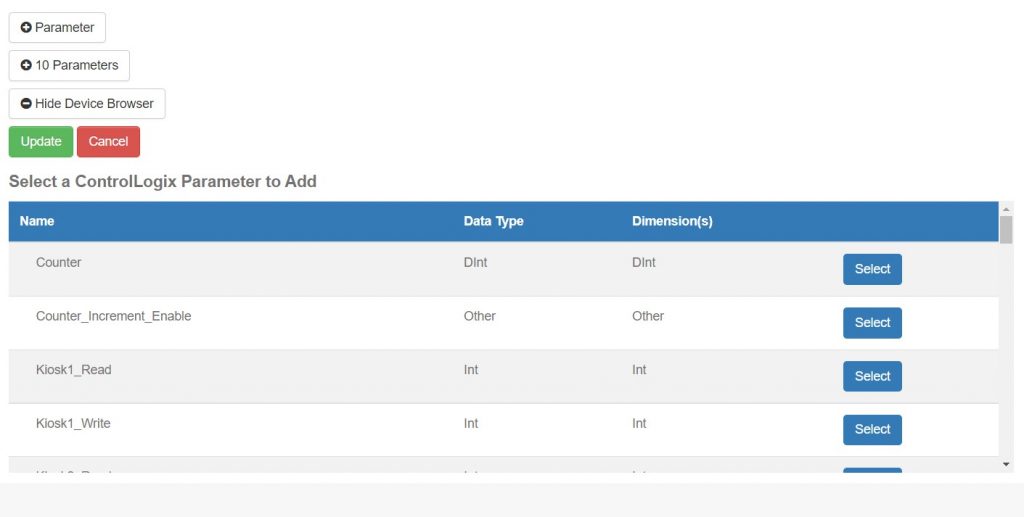Tag Browser available for ControlLogix
In recent months, OnPing has focused on expanding the set of digitization tools available to users. Oftentimes, this leads to an active shift in how the user operates within OnPing. Big splashy features tend to take all the oxygen from the room, but sometimes a subtle change is indicative of bigger things happening behind the scenes. Today, OnPing is announcing one such newly released feature – the ControlLogix Tag Browser. In this article we will explore what Tag Browser is, what it does, and what the implications of Tag Browser are for OnPing moving forward.
What is the Tag Browser?
The Tag Browser is OnPing’s first-generation automated data retrieval tool. Users can now see data as it appears on a device – including custom data types. Every tag of an eligible device is conveniently formatted, displayed and accessible in the same place. Use the Tag Browser feature to quickly find information or use it to understand how a tag is currently constructed.
Where is it?
The tool is neatly integrated with controller widgets in OnPing (At the time of writing, Tag Browser is available exclusively for ControlLogix devices). To access it:
- Select a site with active ControlLogix Locations (a selected Site will auto-populate the list of active locations)

- Choose a Location/device
- Scroll down to ‘Edit Parameters’

- ‘Access Browser’ will appear below as an editing option. Scroll down until you find it

- Open ‘Show Device Browser’ to see a list of all readable tags.

What are User Defined Types (UDTs)?
User Defined Types, as the name implies, are custom datatypes created by users in ControlLogix devices. UDTS are created at the device level and structure data into a reusable package. They are especially useful for defining low deviance systems that are commonly used throughout an organization that are not explicitly or easily defined by generic data types – such as a valve or pump system.
Data is fundamentally an attempt to understand the state of some device, operation, or system. UDTs offer users the chance to organize data in meaningful ways. Displaying a set of key diagnostic points from various components of a pump system is a more productive use of data than displaying each point independent of context.
UDT’s operate as an elegant solution to a common problem for automation equipment manufacturers: If automation is used by many people for many purposes, how can the device function fully for everyone? UDTs forward the burden of data customization to device users, empowering operators to create meaningful datatypes for specific needs.
Further Type Customization
UDTs are not unique as a means of increasing data customization in automation practices. Add-On Instructions are another example of user control over automation data structure. Similar to UDTs, AOIs look to reduce the burden of scale for developers. An AOI is an easily deployed package of code that delivers pre-determined instructions to a device using system or user defined data types. In many cases, the Tag Browser will be able to identify and replicate AOIs along with UDTs. Note that the feature is currently optimized for UDTs – but AOIs can be an available resource for users as well.
These are just two examples of custom types utilized by OnPing users, however the eventual goal of Tag Browser is to work with all data, irrespective of type.
Retrieving Custom Types with OnPing
Custom types, such as UDTs offer a great deal of utility at the device level, but that utility presents a huge hurdle to developing a universal data retrieval tool. Suddenly, the challenge shifts from searching for a limited, pre-defined data set with known characteristics to searching for and replicating an undefined, unlimited data set organized among an infinitely large and unknown set of characteristics.
This challenge presents a big hurdle for data retrieval, but narrowing down the scope of the project and starting with custom types in ControlLogix projects helped reduce some of the unknown’s in the equation. In the future, OnPing can build on the ControlLogix Tag Browser integration to create universal data retrieval tools available for all devices in OnPing.
UDTs are the first auto-retrievable non-standard types in OnPing and are a great place to begin adding this capability for a variety of reasons:
- First, UDTs are native to devices common to industrial automation and OnPing customers – many current and future users can see an immediate impact from using the new feature. User size is important because we want a large pool of user responses from which to receive feedback to help guide future expansion of our custom type retrieval initiatives.
- Secondly, the development ground (Studio 5000) for UDTs was mostly replicable with the existing OnPing framework – users familiar with the environment can more easily translate existing knowledge into actionable infrastructure plans in OnPing. We wanted to make transitioning between environments as seamless as possible so that OnPing feels like a natural extension of the ControlLogix device. Understanding the perspective of the user experience is important to learning how and why types are developed, as well as how digital environmental conditions restrict or enable data structure development.
- Finally, customers utilizing UTDs have already gone beyond the bare basics of automation – insight and feedback from these users are valuable resources as OnPing continues to grow. Creating a UTD implies a deeper, more intricate understanding of the needs of an automation system. Type development requires thought and a great deal of work. Organizations using custom types have reasons for the development of those types. That information is essential to maximizing the realized potential of OnPing.
Custom-type retrieval is a necessary step towards universalizing the OnPing platform. ControlLogix Tag Browser removes prior limitations, offers users more access to powerful custom types and simplifies the process of adding devices.
Community Gains and Shared Experience
Feedback from this project will be used to further develop better data retrieval resources for all of our users. OnPing is uniquely positioned to incorporate the ideas of community and automation into something new for industrial applications. Every new solution becomes a part of the greater pool of resources available to the OnPing community.
Tag Browser is an excellent example. Overtime, the complexities of new products from many customers created a need to develop better behind-the-scenes processes. Those efforts led to an integrated ControlLogix Tag Browser – the first of its kind in OnPing.
The Big Picture for OnPing and Tag Browser
It’s easy to get caught up discussing big overarching concepts of themes, ideas, and goals in technology. This is great when you are discussing the philosophy behind a decision or system – but how do we integrate those big ideas with the nitty gritty work that needs to be done to build a system?
When we talk about OnPing as an ecosystem or platform it has to mean something – and new features need to fit into that meaning. So let’s get into the specifics of exactly how Tag Browser fits into the Bigger Picture at OnPing:
-
Visibility
- Users can see data from a ControlLogix device remotely and as it appears on the device. Tag Browser doesn’t just show the names of UDTs – it also shows a breakdown which data points the new type is composed from in an easily navigable window.
- Information about devices is now accessible in OnPing just like any other important information about the system. In the end, the goal is one source of truth for automation – OnPing.
-
Simplification
- Bringing a ControlLogix device into OnPing is fast and hassle-free with the Tag Browser. Less development time, more time looking at the data you want to see.
- The same tool that makes the data retrieval process simpler is also the tool making tags easier to find and use. Tag Browser is a lot of power in a small package.
- Ease of Use
- Tag Browser automatically retrieves data from a device, converts it to information, and presents the information in a browsable list – without any additional input or formatting required from the user.
- It reduces the need for prior device/location knowledge, making it easier to get new team members up to speed about systems using ControlLogix devices.
- The browser enables low-code access to tags and easier utilization of the data.
-
Community Development and Continual Improvement
- With Tag Browser, our efforts to reduce resource waste transformed into a user-facing product.In the end, we all have the same goal – simplified data access and reduced device commissioning time.
- As customers use the Tag Browser feature, user feedback will be re-integrated with the development process to improve the feature. This cycle of feedback and development is required to build a platform that feels responsive to user needs.
In the big picture, the Tag Browser system is the next step into realizing the OnPing’s potential as a single source of truth for industrial data. More information is available in one place; data retrieval and visualization processes for ControlLogix devices are merged into a single tool; and the complexity of OnPing has been reduced with the addition of another low-code feature.
Looking Forward
Ideally, automation should feel a little magical: A device is active in OnPing, so of course all the tags are visible there, too. In reality, this is easier said than done, but Tag Browser is a big step in the right direction. We are excited to see how users leverage this new feature to better utilize ControlLogix devices in automation infrastructure. The rollout for this feature was small – for many people it was just a quick update to an editing window in a device controller widget. But the mechanics behind making it happen signal a huge shift and open up new opportunities for the OnPing community. Tag Browser reduces complexity on the platform, speeds up the data retrieval process, and makes data make sense to more people.
Contact Us
We would love to hear how you are using the OnPing platform to build better automation systems. If you have questions or feedback on any feature, contact us at info@onping.net and let us know!

